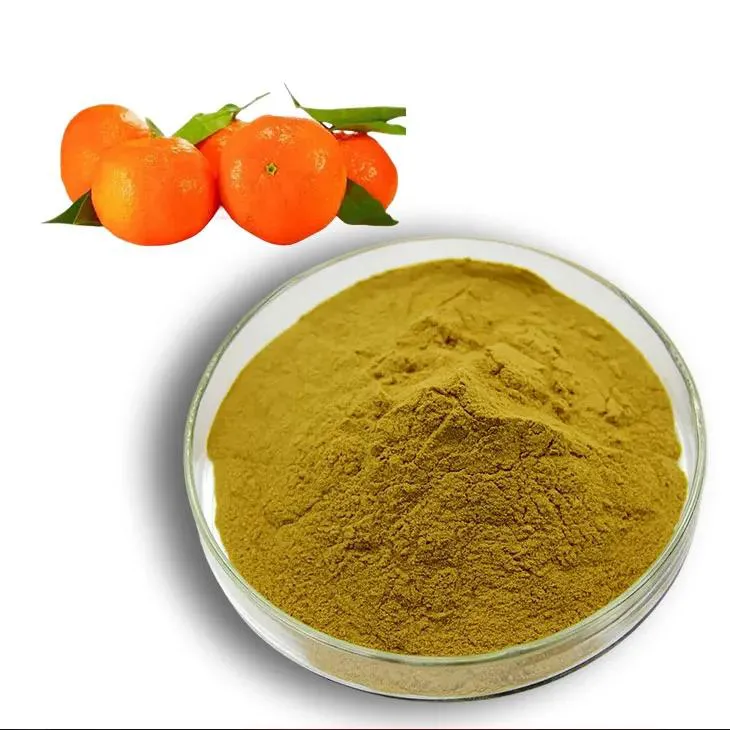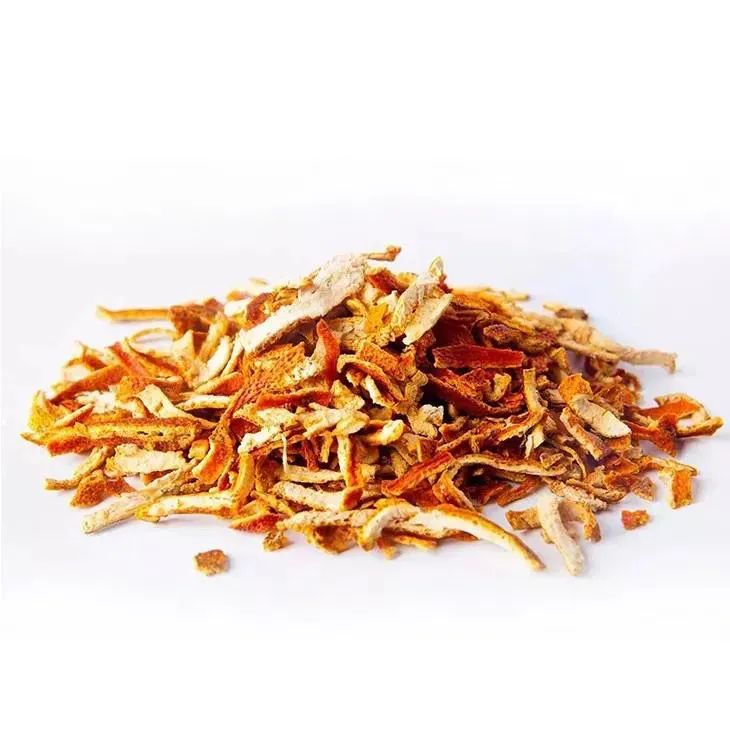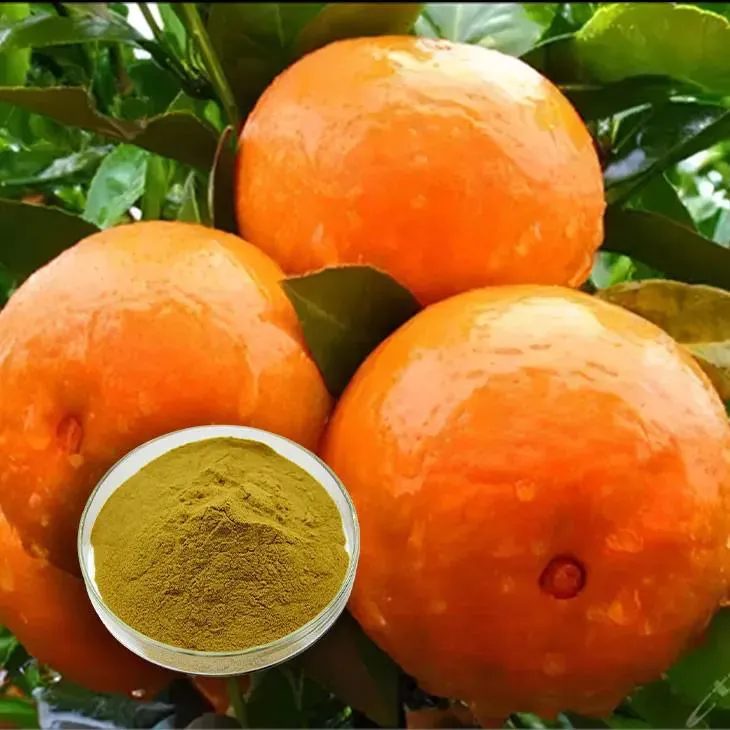- 0086-571-85302990
- sales@greenskybio.com
Extraction of citrus bioflavonoids by steam distillation.
2024-11-26

1. Introduction
Citrus fruits are well - known for their rich nutritional content, and among the valuable compounds they contain are bioflavonoids. Citrus bioflavonoids have attracted significant attention due to their numerous health benefits. These bioactive compounds have antioxidant, anti - inflammatory, and anti - microbial properties, among others. As a result, there is a growing interest in extracting these bioflavonoids for various applications in the pharmaceuticals, cosmetics, and food industry. Steam distillation is one of the methods that can be employed for this extraction purpose.

2. What are Citrus bioflavonoids?
Citrus bioflavonoids are a class of polyphenolic compounds that are widely distributed in citrus fruits such as oranges, lemons, and grapefruits. They are often found in the peel, pulp, and seeds of these fruits. Some of the common citrus bioflavonoids include Hesperidin, naringin, and Quercetin. These compounds play important roles in the plant's defense mechanisms against pathogens and environmental stresses. In the human body, they can help in preventing chronic diseases, improving cardiovascular health, and enhancing the immune system.

3. Principles of Steam Distillation
3.1 Vapor - Liquid Equilibrium
Steam distillation is based on the principle of vapor - liquid equilibrium. When a mixture of water and a volatile compound (in this case, citrus bioflavonoids) is heated, the vapor pressure of the mixture is the sum of the vapor pressures of the individual components. Since water has a relatively high vapor pressure at a given temperature, it can carry the volatile bioflavonoids with it into the vapor phase. This allows for the separation of the bioflavonoids from the non - volatile components of the citrus material.
3.2 Selective Volatilization
The process also takes advantage of the selective volatilization of the bioflavonoids. Different bioflavonoids have different volatilities depending on their chemical structures. By carefully controlling the temperature and pressure during steam distillation, it is possible to preferentially volatilize the desired bioflavonoids while leaving behind other less volatile or non - volatile substances. This selectivity is crucial for obtaining a high - quality extract rich in the target bioflavonoids.

4. Equipment Used in Steam Distillation for Citrus Bioflavonoid Extraction
4.1 Steam Generator
The steam generator is a key component of the steam distillation setup. It is responsible for producing a continuous supply of steam at a controlled pressure and temperature. Modern steam generators are often electrically heated and can be adjusted to provide the optimal steam conditions for the extraction process. The quality of the steam, in terms of its purity and pressure stability, can significantly affect the efficiency and quality of the bioflavonoid extraction.
4.2 Distillation Flask
The distillation flask is where the citrus material (peel, pulp, or seeds) is placed along with water. It is typically made of heat - resistant glass or stainless steel. The flask should have a sufficient capacity to hold the material and water mixture and should be designed to allow for efficient heat transfer during the distillation process. A proper - fitting stopper or lid is also important to prevent the loss of steam and the ingress of contaminants.
4.3 Condenser
The condenser is used to cool the vapor mixture (steam and bioflavonoids) back into a liquid state. There are different types of condensers, such as the water - cooled condenser and the air - cooled condenser. Water - cooled condensers are more commonly used in steam distillation for citrus bioflavonoid extraction as they can provide more efficient cooling. The condenser is connected to the distillation flask at one end and to a collection vessel at the other end.
4.4 Collection Vessel
The collection vessel is where the condensed liquid, which contains the extracted citrus bioflavonoids, is collected. It should be made of a suitable material, such as glass or plastic, that is inert to the bioflavonoids and does not contaminate the extract. The collection vessel should have a proper sealing mechanism to prevent the evaporation of the extract and the entry of air or other contaminants.
5. Steps Involved in Steam Distillation for Citrus Bioflavonoid Extraction
-
Preparation of Citrus Material
The first step is to prepare the citrus material. This may involve washing the citrus fruits thoroughly to remove any dirt or pesticides. The peel, pulp, or seeds can then be separated depending on the source of bioflavonoids desired. For example, if Hesperidin is the target bioflavonoid, the peel may be a preferred source. The prepared citrus material is then cut or ground into small pieces to increase the surface area for better extraction.
-
Mixing with Water
After preparation, the citrus material is mixed with water in the distillation flask. The ratio of citrus material to water can vary depending on factors such as the type of citrus, the concentration of bioflavonoids expected, and the capacity of the distillation flask. A common ratio is around 1:5 (citrus material to water by weight), but this can be optimized through experimentation.
-
Steam Generation and Distillation
The steam generator is then activated to produce steam. The steam is introduced into the distillation flask containing the citrus - water mixture. As the steam passes through the mixture, it heats the mixture and causes the bioflavonoids to volatilize. The vapor mixture (steam and bioflavonoids) then rises up and enters the condenser.
-
Condensation
In the condenser, the vapor mixture is cooled. The steam is condensed back into water, while the bioflavonoids, which are less soluble in water at lower temperatures, start to separate. The condensed liquid, which now contains the bioflavonoids, flows into the collection vessel.
-
Separation and Purification
Once the extraction is complete, the collected liquid may need to be further separated and purified. This can involve techniques such as filtration to remove any solid particles, and solvent extraction or chromatography to separate the bioflavonoids from other compounds in the extract. These additional steps are important to obtain a pure and high - quality bioflavonoid product.
6. Quality of the Extracted Citrus Bioflavonoids
The quality of the extracted citrus bioflavonoids can be evaluated in several ways. One important aspect is the purity of the bioflavonoids. High - quality extracts should have a high concentration of the target bioflavonoids and a low level of contaminants. Analytical techniques such as high - performance liquid chromatography (HPLC) can be used to determine the purity and identify the different bioflavonoids present in the extract. Another factor is the antioxidant activity of the bioflavonoids. This can be measured using assays such as the DPPH (2,2 - diphenyl - 1 - picrylhydrazyl) radical scavenging assay. Bioflavonoids with high antioxidant activity are generally considered to be of better quality.
7. Applications of Citrus Bioflavonoids in Different Industries
7.1 Pharmaceuticals
In the pharmaceutical industry, citrus bioflavonoids have potential applications in the treatment and prevention of various diseases. For example, their antioxidant and anti - inflammatory properties make them candidates for the development of drugs for cardiovascular diseases, such as atherosclerosis. They may also be used in the treatment of certain types of cancer, either alone or in combination with other drugs. Additionally, citrus bioflavonoids can be used in the formulation of dietary supplements to improve overall health.
7.2 Cosmetics
The cosmetics industry can benefit from citrus bioflavonoids due to their antioxidant and skin - protecting properties. They can be incorporated into skincare products such as creams, lotions, and serums to protect the skin from oxidative stress caused by environmental factors such as UV radiation and pollution. Citrus bioflavonoids may also help in improving skin elasticity and reducing the appearance of wrinkles, making them popular ingredients in anti - aging cosmetics.
7.3 Food Industry
In the food industry, citrus bioflavonoids can be used as natural additives. They can act as antioxidants to extend the shelf - life of food products, preventing rancidity and spoilage. They can also be added to functional foods and beverages to enhance their nutritional value. For example, citrus - flavored drinks can be fortified with citrus bioflavonoids to provide additional health benefits to consumers.
8. Conclusion
Steam distillation is a promising method for the extraction of citrus bioflavonoids. By understanding the principles, using the appropriate equipment, and following the correct steps, it is possible to obtain high - quality bioflavonoids with potential applications in pharmaceuticals, cosmetics, and the food industry. However, further research is still needed to optimize the extraction process, improve the purity of the extracts, and explore more applications of these valuable bioactive compounds.
FAQ:
1. What are citrus bioflavonoids?
Citrus bioflavonoids are a group of plant - derived compounds found in citrus fruits. They are known for their antioxidant, anti - inflammatory, and other beneficial properties.
2. How does steam distillation work for extracting citrus bioflavonoids?
Steam distillation works by passing steam through the citrus material. The steam helps to vaporize the bioflavonoids, which are then condensed and collected. The principle is based on the different volatilities of the compounds in the citrus. The steam carries the bioflavonoids, which can be separated from the non - volatile components during the condensation process.
3. What equipment is required for steam distillation of citrus bioflavonoids?
The basic equipment includes a steam generator, a distillation flask or vessel to hold the citrus material, a condenser to cool and condense the vapor, and a collection flask. There may also be additional components such as thermometers to monitor the temperature and valves to control the flow of steam.
4. What are the steps involved in the steam distillation process for citrus bioflavonoids?
First, the citrus material is prepared and placed in the distillation flask. Then, steam is introduced into the flask. The steam vaporizes the bioflavonoids, and the vapor - steam mixture is passed through the condenser. In the condenser, the vapor is cooled and condensed into a liquid, which is then collected in the collection flask. After collection, further purification or separation steps may be required depending on the desired purity of the bioflavonoids.
5. What are the potential applications of citrus bioflavonoids extracted by steam distillation?
The potential applications are widespread. In the pharmaceutical industry, they can be used for their antioxidant and anti - inflammatory properties in drug development. In cosmetics, they can be added to products for skin health benefits. In the food industry, they can be used as natural additives for their antioxidant and preservative effects.
Related literature
- Extraction and Characterization of Bioflavonoids from Citrus Fruits"
- "Steam Distillation: A Traditional and Modern Approach for Bioactive Compound Extraction from Citrus"
- "The Role of Citrus Bioflavonoids in Health and Their Extraction by Modern Methods"
- ▶ Hesperidin
- ▶ citrus bioflavonoids
- ▶ plant extract
- ▶ lycopene
- ▶ Diosmin
- ▶ Grape seed extract
- ▶ Sea buckthorn Juice Powder
- ▶ Beetroot powder
- ▶ Hops Extract
- ▶ Artichoke Extract
- ▶ Reishi mushroom extract
- ▶ Astaxanthin
- ▶ Green Tea Extract
- ▶ Curcumin Extract
- ▶ Horse Chestnut Extract
- ▶ Other Problems
- ▶ Boswellia Serrata Extract
- ▶ Resveratrol Extract
- ▶ Marigold Extract
- ▶ Grape Leaf Extract
- ▶ blog3
- ▶ blog4
-
The Most Highly - Rated Vitamin K2.
2024-11-26
-
The best green tea extract in 2024.
2024-11-26
-
Genistein suppliers.
2024-11-26
-
How to extract sparteine from plants?
2024-11-26
-
Nature's Bounty L - Theanine Powder
2024-11-26
-
Black Rice Extract
2024-11-26
-
Beetroot juice Powder
2024-11-26
-
Camu Camu Extract
2024-11-26
-
Bilberry Extract
2024-11-26
-
Curcuma Longa Extract
2024-11-26
-
Bitter Melon Extract
2024-11-26
-
Coconut Water Powder
2024-11-26
-
Troxerutin
2024-11-26
-
Coix Seed Extract
2024-11-26
-
Ginseng Root Extract
2024-11-26





















